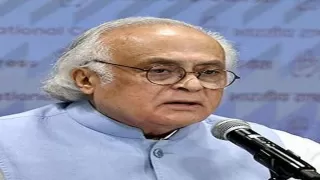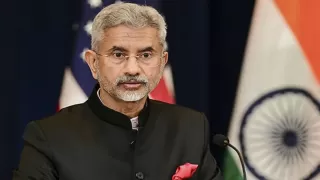In a landmark achievement that reshapes the field of chemistry, three distinguished scientists — Susumu Kitagawa, Richard Robson, and Omar M. Yaghi — have been awarded the 2025 Nobel Prize in Chemistry for their revolutionary work on developing a “new type of molecular architecture.” Their discovery, the creation of metal–organic frameworks (MOFs), has opened an entirely new frontier in material science, offering endless possibilities in energy, environment, and technology.
Metal–organic frameworks are crystalline compounds consisting of metal ions connected by organic linkers, forming intricate structures with vast internal cavities. These structures act like molecular sponges — lightweight, flexible, and capable of storing or filtering gases and molecules at an astonishing scale. The innovation not only revolutionizes how chemists design and manipulate materials but also provides powerful tools for tackling global challenges such as carbon capture, clean energy, and pollution reduction.
The combined efforts of Kitagawa, Robson, and Yaghi have transformed an early scientific idea into one of the most promising technologies of the 21st century. Their individual breakthroughs — from Robson’s conceptual frameworks to Kitagawa’s demonstration of gas permeability and Yaghi’s creation of ultra-stable and tunable MOFs — have together established the foundation for what is now known as reticular chemistry, a branch of science that enables chemists to design materials atom by atom for specific purposes.
The Breakthrough: What Are Metal–Organic Frameworks?
Credit: Royal Swedish Academy of Sciences
Metal–organic frameworks, or MOFs, are a revolutionary class of materials that combine metal nodes with organic linkers to form 3D crystalline networks. These frameworks can be tailored in terms of their composition, pore size, and chemical function, making them ideal for a wide range of applications. The pores within MOFs allow gases and small molecules to pass through, making them effective for gas storage, separation, and catalysis.
Unlike traditional solid materials, MOFs can be engineered with precision, offering chemists the ability to design materials for specific functions — from capturing toxic gases and storing hydrogen fuel to filtering water and even delivering drugs. Their modular nature has made them one of the most versatile and studied material families in modern chemistry.
Richard Robson: The Early Architect of Framework Chemistry
In 1989, Australian chemist Richard Robson from the University of Melbourne laid the foundation for what would become the science of metal–organic frameworks. By experimenting with copper ions and a four-armed organic molecule, he demonstrated that it was possible to assemble crystalline structures that contained ordered, empty spaces — a concept that had never before been realized at the molecular level.
Robson’s early structures were delicate and unstable, but they introduced a new way of thinking: that molecules could be connected like building blocks to create extended, porous frameworks. His insight was pivotal in inspiring a generation of chemists to explore self-assembly and structural design beyond conventional molecules.
Susumu Kitagawa: Demonstrating Porosity and Flexibility
Japanese chemist Susumu Kitagawa of Kyoto University took Robson’s idea further by showing that gases could flow in and out of these frameworks. His experiments proved that MOFs were not only porous but also flexible — capable of expanding or contracting depending on the molecules they interacted with. This discovery established that MOFs could serve as functional materials rather than fragile curiosities.
Kitagawa’s contribution transformed MOFs into a practical concept. By proving their dynamic porosity and adaptability, he demonstrated their potential use in gas storage, separation, and environmental applications. His work helped shift the perception of MOFs from laboratory structures to real-world solutions.
Omar M. Yaghi: Building Stability and Design Precision
Omar M. Yaghi, a professor at the University of California, Berkeley, solved one of the biggest challenges in the field — stability. His pioneering work in the 1990s led to the creation of the first highly stable and robust MOFs that could withstand various environmental conditions. Yaghi also introduced the concept of “reticular chemistry,” which allowed scientists to design MOFs with atomic-level precision for desired properties and uses.
Yaghi’s laboratory produced several landmark frameworks, including MOF-5, a structure renowned for its immense internal surface area and exceptional gas storage capabilities. His innovations turned MOFs from scientific curiosities into practical materials with commercial and industrial potential, enabling advancements in clean energy storage and carbon dioxide capture.
Why the Nobel Committee Honoured Their Work
The Royal Swedish Academy of Sciences recognised Kitagawa, Robson, and Yaghi “for the development of metal–organic frameworks,” citing their collective contribution to giving chemistry a new structural language. The committee highlighted how MOFs provide “rooms for chemistry” — a metaphor for the internal cavities that host molecular interactions, reactions, and separations within the frameworks.
MOFs have since been applied in a wide variety of fields, from capturing greenhouse gases and purifying water to storing hydrogen and designing new types of sensors. Their modular design allows chemists to create bespoke materials with extraordinary precision, tailored for environmental sustainability and energy efficiency.
The Future Impact of Metal–Organic Frameworks
Today, researchers around the world have synthesized tens of thousands of distinct MOF structures, each optimized for specific industrial or environmental functions. These frameworks are being used to capture carbon dioxide from power plants, filter toxic “forever chemicals” from water supplies, and store hydrogen for clean energy technologies.
In the electronics industry, MOFs are being tested to safely contain or neutralize hazardous gases used in semiconductor manufacturing. Some variants are even capable of breaking down chemical warfare agents, while others are designed to harvest water from arid air — offering hope for sustainable water solutions in drought-prone regions.
A Legacy of Innovation
The recognition of Kitagawa, Robson, and Yaghi with the 2025 Nobel Prize in Chemistry underscores how visionary research can fundamentally transform scientific disciplines. Their collective work on metal–organic frameworks has not only redefined molecular design but also expanded the horizons of what materials can achieve. As scientists continue to explore the potential of MOFs, their influence is expected to grow across clean energy, environmental remediation, catalysis, and beyond — shaping the future of chemistry for decades to come.
Also Read: Starmer’s India Visit: Fast-Track UK-India Trade Deal Now!























